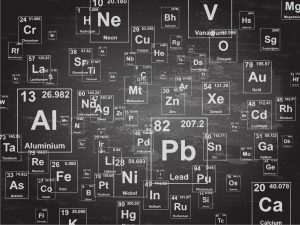 Surely you have heard about metal poisonings such as lead, but have you heard of lower levels of such metals causing a myriad of symptoms and metabolic dysfunction? It is more prevalent than a person might think.
Surely you have heard about metal poisonings such as lead, but have you heard of lower levels of such metals causing a myriad of symptoms and metabolic dysfunction? It is more prevalent than a person might think.
What metals are toxic? Any metal can be toxic if in too high of an amount. Most commonly we hear about Mercury, Cadmium, Aluminum, Lead, and Iron. Granted, there are many other metals that can cause difficulties—those mentioned here account for a large percentage of those that cause symptoms. Let’s look at three of these metals: Mercury, Cadmium, and Iron.
- Mercury is the metal that most people have heard of causing symptoms. Mercury is a metal that has no positive functioning in the body and wreaks havoc on the nervous system, enzymes and hormones. Symptoms can range from poor memory, moodiness, depression, and indecision to tremors, sleeplessness, anemia, fatigue and headaches.
- Cadmium, like mercury, is toxic to every body system. Some of the effects of cadmium are high blood pressure, kidney and liver dysfunction, anemia, dementia, and limited calcium absorption. Often people with high cadmium levels show symptoms such as sore joints, mouth lesions, scaly skin, hair loss, and bone loss.
- Iron is essential to red blood cell functioning and carrying oxygen to the cells. However, in too high of an amount, iron can cause the same symptoms of iron deficiency. These symptoms can be fatigue, weakness, a tendency to infections etc. When there is excess iron, the body deposits this in organs such as the pancreas, pituitary, adrenals and liver; but the most sensitive tissue is in the brain.
Heavy metals have some overlapping symptoms such as metallic taste, fatigue, and weakness. The nervous system, kidneys and liver are most susceptible to these metals. Why? The liver and kidneys are the filters and waste management systems of the blood, so these organs get a higher exposure from trying to eliminate the metals from the system. The brain and nerves are suspected to have a high attraction to metals because once in the blood, these metals seek a “fatty” tissue to find a balanced energetic state. It is like opposite ends of a magnet attracting each other—and the brain especially is made of fatty substances.
